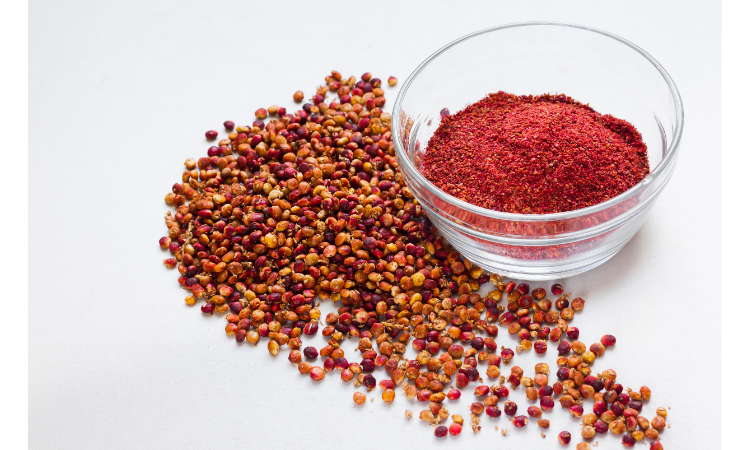Exploring the culinary world often takes us on an adventurous journey through various flavors and aromas. One way to embark on this delightful expedition is by incorporating tips for cooking with exotic spices and herbs into our daily kitchen routine. These flavors not only enhance our dishes but also transport us to distant lands without ever leaving our kitchens.
Here are some expert tips for cooking with exotic spices and herbs to help you navigate this exciting culinary territory.
Start Slowly

If you’re new to the world of exotic spices and herbs, it’s a good idea to start with a small amount. Remember, you can always add more, but you can’t take it away once it’s in the dish. Introduce one new spice or herb to your palette at a time, gradually increasing as you become more familiar with its nuances.
Freshness Matters

Just like with regular spices and herbs, freshness can make a massive difference in the flavor of your dish. Whenever possible, purchase whole spices and grind them as needed. This ensures maximum flavor and longevity. Herbs should be fresh and vibrant in color. If using dried versions, ensure they haven’t been sitting in your cupboard for ages.
Learn About Their Origins

Understanding where a spice or herb comes from can offer insights into how it might best be used. For instance, spices that are native to the Mediterranean might be best suited for dishes from that region. Familiarize yourself with the culinary traditions of the regions from which your spices hail.
Proper Storage

Protect your investment in these flavorful gems by storing them correctly. Keep spices in a cool, dark place and, ideally, in airtight containers. This will help in preserving their potency for longer. Herbs, on the other hand, can be stored in the refrigerator, wrapped in a damp paper towel and placed in a plastic bag.
Pair Wisely

While it’s tempting to throw a bunch of exciting flavors into one pot, restraint can often be beneficial. Some exotic spices and herbs have robust flavors that can overpower others. Research pairings or consult recipes that utilize these flavors to understand how they can complement each other.
Taste as You Go

This might seem like a no-brainer, but it’s worth noting. As you experiment with new flavors, taste your dish at different stages of cooking. Adjust the seasonings as needed to achieve the desired taste.
Respect Traditional Uses

While innovation in cooking is always encouraged, respecting the traditional use of a spice or herb can lead to authentic and flavorful dishes. For example, if you’re using a particular spice commonly found in Indian cuisine, look up traditional Indian dishes for inspiration.
Bloom Your Spices

A fantastic way to extract maximum flavor from your spices is to bloom them. This means gently frying them in oil or butter before adding them to your dish. This method releases the essential oils in the spices, intensifying their flavor.
Explore and Experiment

Don’t be afraid to step outside of your comfort zone. While certain pairings are tried and true, some of the most exciting dishes arise from unexpected combinations. Let your creativity run wild and enjoy the journey of discovering new tastes and textures.
Educate Yourself on Health Benefits

Many exotic spices and herbs come with a slew of health benefits. Turmeric, for example, is known for its anti-inflammatory properties, while rosemary has been linked to improved memory. Dive into the health benefits of these spices and herbs to not only elevate your cooking game but also your well-being.
Global Inspirations: A Few Exotic Spices To Explore
To further embolden your culinary journey, here’s a curated list of some incredible exotic spices and herbs from around the world that you might want to try:
Sumac

Originating from the Middle East, sumac has a tart and lemony flavor. It’s commonly sprinkled on top of dishes or used in spice blends like za’atar.
Galangal

Often confused with ginger, galangal has a sharper, spicier, and slightly more citrusy taste. It’s a staple in Thai and Indonesian cuisines.
Grains of Paradise

This West African spice resembles black pepper but offers a zesty flavor with hints of citrus. It’s perfect for giving dishes an unexpected twist.
Saffron

Renowned as the world’s most expensive spice, saffron offers a unique earthy flavor and a vibrant golden hue. It’s popular in Middle Eastern, Indian, and Mediterranean dishes.
Epazote

Native to Central and South America, epazote is a herb with a robust flavor profile, often likened to oregano or tarragon. It’s commonly used in traditional Mexican dishes, especially in bean recipes to reduce flatulence.
Fenugreek

This multifaceted spice has both bitter and sweet notes. It plays a key role in Indian curries and is also used to flavor artificial maple syrup.
Ajwain

These tiny seeds pack a pungent flavor, reminiscent of thyme or caraway. Widely used in Indian cooking, ajwain is also known for its digestive benefits.
Safety and Precautions

While exotic spices and herbs are a delightful addition to any dish, it’s essential to approach them with a degree of caution.
Allergies & Sensitivities: Before trying a new spice or herb, make sure you aren’t allergic or sensitive to it. If you’re unsure, do a patch test or consult a doctor.
Pregnancy Considerations: Some spices and herbs should be consumed in moderation or avoided altogether during pregnancy. Always consult a healthcare professional if unsure.
Drug Interactions: Some spices can interact with medications. For instance, excessive amounts of turmeric might interfere with anticoagulant drugs. Once again, if in doubt, consult with a healthcare expert.
The Ultimate Spice Rack: Essential Tools & Equipment
As you venture deeper into the realm of exotic spices and herbs, it’s paramount to have the right tools at your disposal. A well-equipped kitchen can make the process not only easier but also more enjoyable. Here are some must-haves for every spice enthusiast:
Mortar and Pestle

This ancient kitchen tool is essential for grinding and blending spices. The manual grinding process releases the natural oils, resulting in fresher and more intense flavors than pre-ground alternatives.
Airtight Spice Containers

Protect your spices from moisture, air, and light. Glass jars with tight-fitting lids are excellent choices. Labeling each container ensures you grab the right spice at a glance.
Spice Grinder

For those who prefer an efficient approach, an electric grinder can be a game-changer. Ensure you clean it thoroughly between uses to prevent flavor cross-contamination.
Silicone Spice Funnel

A tiny funnel can make the process of transferring ground spices to jars spill-free and tidy.
Digital Scale

Precision is crucial, especially when working with potent spices. A digital scale allows you to measure exact quantities, ensuring consistent results every time.
Spice Rack or Drawer Organizers

Organization is the key. Having a systematic spice storage system, be it a rotating rack or drawer dividers, will save you time and prevent the frustrating spice hunt during crucial cooking moments.
Continuing Your Spice Education
The journey with exotic spices and herbs is not just about cooking. It’s also an educational voyage. Here are some ways to keep learning:
Attend Cooking Workshops

Many local community centers or gourmet kitchen stores offer workshops on specific cuisines or spice uses. It’s a hands-on way to learn and get expert guidance.
Travel (Even Virtually)

Exploring the origins of a particular spice or herb can be enlightening. While traveling physically is ideal, virtual culinary tours or international cooking shows can also offer valuable insights.
Join Online Communities

Platforms like Reddit, Facebook, and specialized forums have groups dedicated to spices, cooking, and global cuisines. Engaging with these communities can offer new recipes, methods, and tips from fellow enthusiasts.
Read Books & Blogs

Many renowned chefs and culinary historians have penned books dedicated to spices. Exploring these resources can deepen your understanding and appreciation of each spice’s history, use, and significance.
In Conclusion
The world of exotic spices and herbs offers an endless array of possibilities for those willing to explore. Whether you’re a novice cook or a seasoned chef, incorporating these flavors into your dishes can lead to delightful and unexpected culinary masterpieces.
So the next time you’re in the mood to experiment, remember these tips for cooking with exotic spices and herbs. Not only will they guide you in creating delicious meals, but they’ll also embark you on a culinary adventure that’s sure to excite your taste buds.
